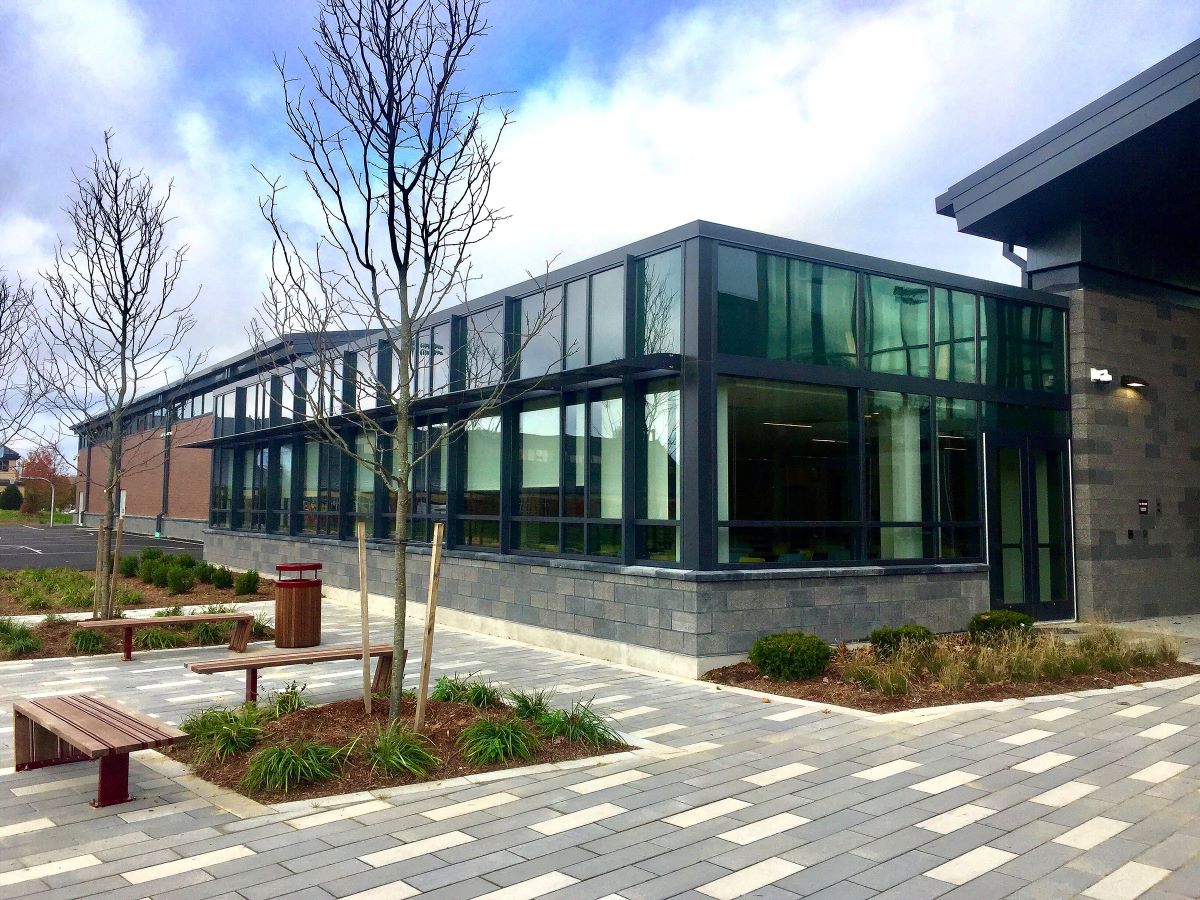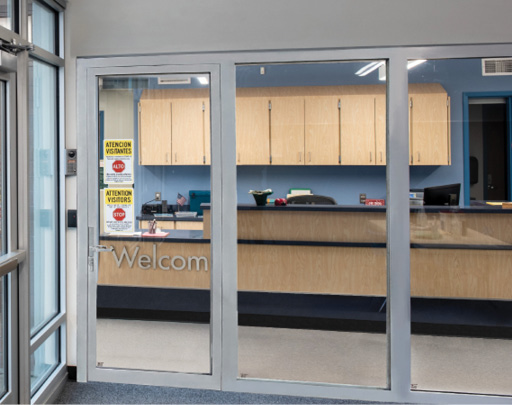Under the Security-Rated Umbrella
What test standards say about performance

Above: Ballistic-rated glazing can support exterior hardening for enhanced school security. Photo by Shea Cox, courtesy of LTI.

Security-rated glazing can help create buildings that are safer and more secure against violent threats. Unlike opaque materials such as bricks, concrete and security-rated steel, this material is transparent, contributing to daylight access and visual connection.
While both benefits support occupant-centered design, visual connection can also contribute to a robust approach to building security. When occupants can identify incoming threats, they are given more time to alert first responders and take appropriate action.
That said, because there are many standards for testing security glazing products and systems, it can be difficult to know which type of security rating would most benefit a project. In addition to consulting with a reputable security professional, knowing the differences between security ratings can help ensure project stakeholders have selected appropriately rated systems.
Different levels of bullet resistance
Bullet-resistant glass can withstand ballistic attack within the limits of its rating. This type of security-rated glazing is tested according to UL 752 standards, which rate the bullet-resistance of a glazing assembly across eight levels. It is important to note that these levels do not progress linearly. Instead, each level corresponds with different threats based on shot pattern, caliber and number of rounds. These levels are grouped into similar but distinct categories.
Selecting the right UL 752 level often involves working with security professionals to identify which threats are most probable depending on a project’s location, occupancy type and other considerations. During this collaboration, it may also be recommended that ballistic glass would not be the most effective solution for adequate protection.
Forced-entry glass delays and deters would-be intruders
Another category of security-rated glazing is forced-entry glass. It resists physical attacks from unskilled or semi-skilled intruders. It is often rated on a time-based scale based on its ability to withstand attacks while staying intact within its framing components.
Instead of stopping bullets and other projectiles, forced-entry glazing acts as a time barrier between occupants and violent threats. Given most active shooter events are over before first responders can arrive, this type of glazing can be essential in delaying access to occupants as they enact lockdown protocols.
Multifunctional, fire-rated glazing solves challenges in building design
While both forced-entry and ballistic-rated glass offer different performance capabilities for enhanced security, these components are often only tested to security standards. This can complicate specifications when a security-rated system also needs to meet fire- and life-safety requirements.
When security-rated glazing components are exposed to fire, they can burn quickly and intensely as they are often plastic-based. As such, if added to a fire-rated assembly, they can reduce or entirely negate the level of defense the full system provides by creating fire conditions that exceed those typical of a standard building fire.
In applications where security goals and code-driven requirements for fire and life safety overlap, specifiers are encouraged to use systems that are built from compatible components or are tested as a full system to multiple standards. Doing so ensures one form of protection does not compromise the other.
Balance is key when planning for occupant safety
While improving building security is an important concern, especially when it comes to schools, it should not take precedence over maintaining code-driven requirements. These codes have been developed and refined over the years to ensure buildings are safe. With more buildings meeting fire- and life-safety requirements, it is no surprise that the National Fire Protection Association has found the number of building fires has generally decreased year after year over the past few decades.
That said, even one building fire is too many. The same can be said for active shooter events. To keep occupants safe, it is important that we consider what types of enhanced security a building needs and how these systems work with established standards for fire and life safety.


